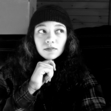The Chilling Affirmation: What My First Readers Taught Me About From the Ashes
There’s a certain vulnerability in pressing “send” and releasing your story into someone else’s hands for the first time. Even if it’s only a handful of trusted readers, it feels like offering a piece of your soul and waiting to see how it’s received. Sharing From the Ashes with my first beta readers was exactly that—both terrifying and exhilarating.
But here’s the secret I’ve found: nothing compares to the moment when their feedback arrives. It’s like standing on the edge of a cliff, heart pounding, and instead of falling—you’re caught. Encouraged. Affirmed. It is one of the most quietly thrilling experiences a writer can have, and it reminded me once again why this craft is equal parts vulnerability and triumph.
The Found Secrets Within the FeedbackWhen Jennell, Beth, and Brenda shared their thoughts with me, I felt the weight of their words settle in my bones in the best way possible. Let me share a little of what they said—and why it meant so much.
Jennell’s FeedbackJennell wrote:
“The hook: There is a fairly good hook as it introduces the main character and the eerie tone of the book. World-Building: The world-building is good. It gives us a good idea of the time frame, the eerie settings, and the Gothic tradition. The supernatural elements were good, as well. Characters: The characters are very compelling, and it was easy to root for Debbie’s success…The secondary characters fit logically into the story and are well-developed. Plot & Pacing: The conflicts are very developed and do a good job of keeping the story interesting and engaging…The story moves along fairly smoothly. There is no rushing towards the end or any lagging in the middle. Dialogue: The dialogue is natural, and it was easy to visualize how each character sounds. Overall thoughts: I really enjoyed reading this story.”
Jennell’s words struck me because they touched on so many elements I painstakingly worked to balance: character, atmosphere, and pacing. To know that the eerie tone—the Gothic skeleton beneath the flesh of the narrative—came through so strongly was its own affirmation. World-building in Gothic horror is its own beast: every flickering candle, every warped shadow, every creak of Hill Manor must carry weight. Hearing that the supernatural elements felt seamless, that the pacing didn’t sag, that Debbie’s struggle mattered—it told me my intentions translated onto the page.
Beth’s FeedbackBeth shared:
“Right off the bat, I gotta say that your use of imagery is beautifully precise without being overly wordy. Your talent for ‘showing’ and not ‘telling’ is evident, and proves immersive for the reader; sentence structures flow well.”
This compliment made my writer’s heart positively hum. Gothic horror thrives on imagery. It’s a genre of shadows and whispers, of atmospheric details that both immerse and unsettle. My goal has always been to paint sensory pictures that lure readers into the world without overwhelming them. Beth’s note that the imagery was precise, immersive, and fluid was exactly the confirmation I needed. It meant the atmosphere was doing its work, haunting without suffocating.
Brenda’s FeedbackBrenda reflected:
“I enjoyed the plotline of From the Ashes and the characters, especially Deborah Hill and her little sister Olivia Hill. You can tell their bond to each other is close. I was confused as to why their aunt was standoffish to them at first, but as I kept reading further, I then understood why. I also liked how Hill Manor wasn’t just a manor house but a character of itself, too. I thought it was neat tying the timelines of the 1600s and 1800s into the story. I had fun reading From the Ashes.”
Her emphasis on character bonds, particularly Deborah and Olivia, warmed me. Relationships, especially sibling ones, are the heartbeats beneath the horror. To know that the bond felt authentic made me feel like I’d honored their story well. I also grinned when she noted Hill Manor itself felt like a character. That was deliberate: every stairwell, draft, and echo was written to pulse with its own secrets. And her appreciation of the layered timelines reminded me that the research and historical weaving had been worth the painstaking care.
The Intention Behind the HorrorThe best part of this feedback is how it aligns with my purpose as a horror writer. Horror, for me, is not about jump scares or buckets of blood. It’s about atmosphere, dread, and the slow revelation of truths—emotional, historical, supernatural. When readers tell me they felt immersed in the eerie world I’ve built, when they notice that the manor itself lives and breathes, when they sense the emotional tether between characters—it means I’m accomplishing what I set out to do.
If my readers feel unsettled yet compelled, unnerved but invested, then I know the story has done its work. Every flicker of fear, every shiver of recognition, was placed there with intention.
A Thank You and a Call to ActionTo Jennell, Beth, and Brenda—a HUGE thank you. Your willingness to step into my unfinished world and share your thoughts is a gift I don’t take lightly. Your insights are not just feedback. They’re affirmations, guiding lights in the fog of creation.
And to anyone reading this: if you’ve ever wanted to peek behind the veil of the creative process, to see a story while it’s still raw and in motion, consider becoming a beta reader! It’s more than just reading—it’s becoming part of the story’s bones, helping shape the haunting that lingers when the final page is turned.



